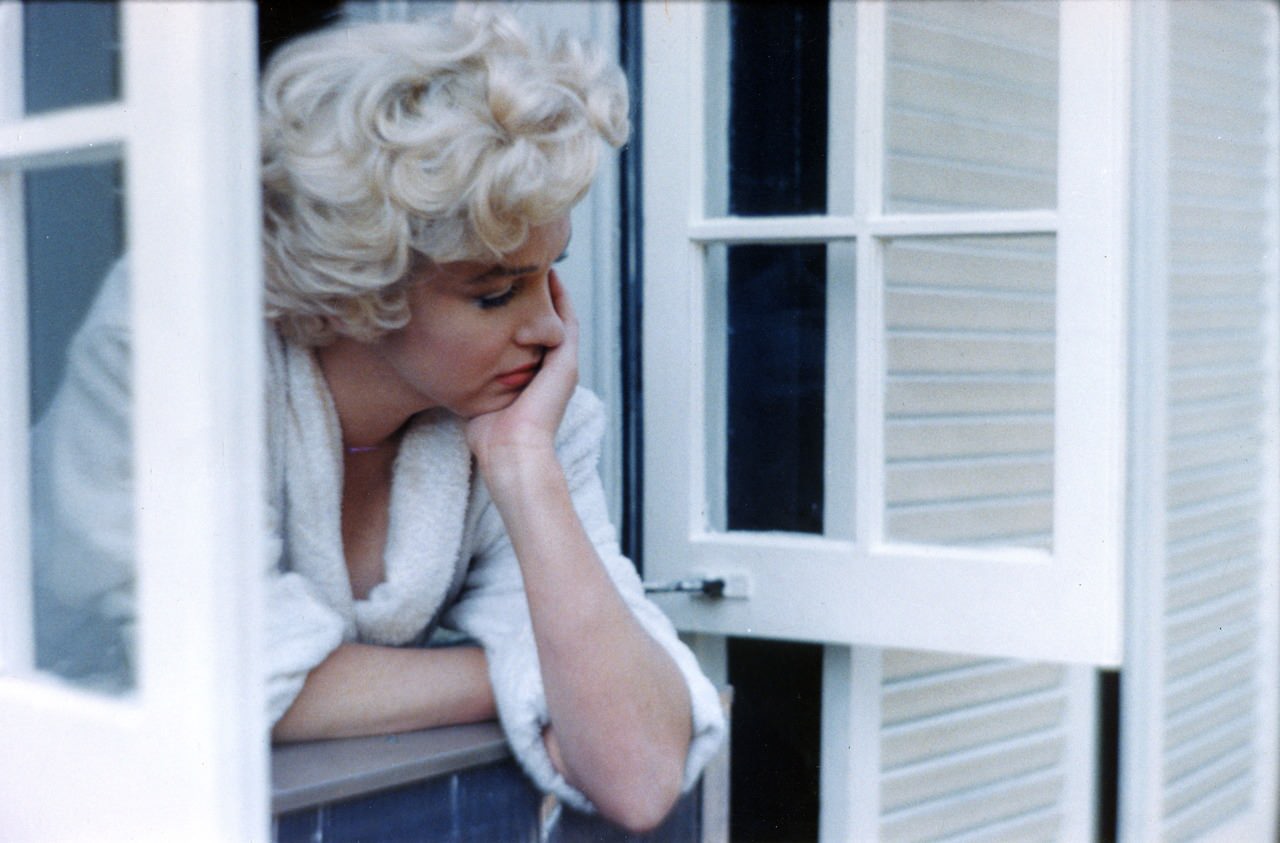

Do you ever notice how frustrated you can become when you believe your thoughts are true and you don’t like what you are thinking? Or have you noticed when you believe that someone else’s thoughts (shared with you through their actions or their words) are true and how unhappy they can make you if you don’t like what you hear or see? I have noticed how unhappy I become when I believe all my thoughts to be true and so has Byron Katie.
A friend of mine (thank you Danny) introduced me to the work of Byron Katie two years ago. Her inquiry process has been so powerful for me and the people with whom I share it. Byron Katie’s work, literally referred to as “The Work of Byron Katie,” allows us to question our own thoughts and the thoughts that we have about the words we hear from others to determine whether they are really true for us as individuals. This process is so incredibly valuable because it raises the level of consciousness we have about our thoughts of ourselves and the thoughts we think about ourselves after having experienced interaction with another.
Last week, we discussed the conscious choice-making process, featured below. If we can use Byron Katie’s inquiry processas we move through the second through the sixth steps of this conscious choice-making process, we will feel much more empowered and will be able to empower others to choose peace, joy and love right in the moment.
Conscious Choice-Making Questions:
- Who am I?
- Who am I in relationship to this in this moment?
- How do I feel about this in this moment?
- What is my role in how I feel?
- What are the options (within my locos of control) that I have to feel better in this moment?
- Which choice will be the most loving for me, while also serving the greater good?
- Do I also choose the potential consequences of this choice?

I’ll share an example of using Byron Katie’s process integrated with the Consciousness Choice-Making Process shortly, but first I’ll share the questions that Byron Katie posits for our consideration every time we have a thought. (Please note that I am sharing this process as I understand it and how I have come to use it, so please visit Byron Katie’s website if you would like to see her work in its entirety and free from my interpretation.) Katie encourages us to question each thought we have by asking ourselves the following questions about our thoughts. Furthermore, she encourages us to answer with a simple “yes” or “no” or “maybe/I don’t know” to the first two questions.
1) Is that true?
2) Do you know beyond a shadow of a doubt that it is true?
3) Now, ask yourself who you would be without that thought? How would you feel if you didn’t believe that thought were true?
4) Conversely, who would you be if you thought that thought were true? How would you feel if you believed that thought were true?
To illustrate using these questions, I’ll share an example. A few months ago, I stopped dating a man who I love very much. He is a beautiful soul and I fully enjoyed his company. I greatly appreciated how much space I felt I had to genuinely be me. And we engaged in conversation regularly, so I assumed he was feeling that he had the same space to be genuinely him. It was a long distance relationship and we had been trading off spending 3-7 days at each other’s homes, which then turned into three-four weeks at a time at each other’s homes. I was having a blast with him and we were planning long-term trips and other commitments, as well as moving our stuff into each other’s homes. All signs pointed toward a long-term commitment, complete with choosing the general location for our commitment ceremony. But then, it all changed.
One day following a ski vacation together where we vacationed for the first time with a set of “each other’s friends,” the conversations became monologues and the only thing I had to interpret were his actions; his words had disappeared. While I felt I shared my interpretations of his actions and then shared the decisions I was making in response to his actions, no words (apart from texts and emails) came back to either affirm or deny that I was making accurate interpretations. All of a sudden, I had moved from thoughtful dialogue with the man I loved to what for the most part felt like a monologue, which continued for four months. I found myself alone with a lot of my thoughts about myself and about his actions. So, you can just imagine the story I was creating in my head.
At a point where I was blaming myself for not really even knowing what to blame myself for or for blaming him for becoming a total jerk out of the blue, I stopped and engaged in Byron Katie’s inquiry process. And it went something like this (I am condensing four months of inquiry here, so you are not completely bored.)
Thought one that came about by his not responding to me with a request for a phone conversation or an in-person meeting to sort everything out went something like this…
My thought: He is a jerk.
Katie’s questions: Is that true? Is he really a jerk?
My answer: Yes
Katie’s question: Can you absolutely know beyond a shadow of a doubt that he is a jerk?
My answer: No
Katie’s question: Who would you be without this thought?
My answer: I would be love and peace.
Katie’s question: Who would you be if you thought this thought were true?
My answer: I would be anger and a victim.
There is more to this process, and before we move there, let me share the other thought that was going on in my head as I was attempting to communicate with the man I love.
My thought: I am not wanted. (I could also insert that I did something wrong but I had no idea of what that might be so I realized that without the ability to process with him, I would never know this to be true so I chose to let that thought go because I had no idea what I had done wrong.)
Katie’s questions: Is that true? Am I really not wanted?
My answer: Yes
Katie’s question: Can you absolutely know beyond a shadow of a doubt that you are not wanted?
My answer: No
Katie’s question: Who would you be without this thought?
My answer: I would be love and peace.
Katie’s question: Who would you be if you thought this thought were true?
My answer: I would be sad and a victim.
Now, incorporating Katie’s inquiry process into the Conscious Choice-Making Questions, consider the following within this example.
1. Who am I?
Love
2. Who am I in relationship to this in this moment?
a. Well, if I believe my thoughts, I am sad, angry, and a victim.
b. If I don’t believe my thoughts, I am love and peace – I am who I believe myself to be.
3. How do I feel about this in this moment?
a. Well, if I believe my thoughts, I feel sad and angry, lonely and abandoned…betrayed even
b. If I don’t believe my thoughts, I feel compassion toward him, for something that I either did or did not do – I don’t know – something may have triggered his withdrawal. Whether I did or did not do anything to trigger that withdrawal, how can I stay angry with him? He is doing what he is able to do. And I feel compassion toward me. I removed myself from the situation in which he wouldn’t engage with me. I love myself and I can still do what I am able to do to take care of myself, regardless of his choices.
4. What is my role in how I feel?
Wow! Initially, I guess I just felt what I felt and I was with my feelings. Then as I engaged in the inquiry process, I realized that I had a choice of how I perceived this and those choices of perception helped me to discover that I have choices in how I respond and those choices influence how I feel. I can choose to be compassionate toward myself and to him. Or I can choose to stay angry and resentful at him and at me. Another part of Katie’s inquiry process asks us to determine whether we would look forward to experiencing a repetition of the feelings we just felt. I would not. I would not welcome the feelings I felt in experiencing this again from him or from anyone so it helps me know that if I don’t wish to repeat this, we either both engage in a process to discover what happened so we can avoid the repetition of these events and feelings or I can choose to disengage.
5. What are the options (within my locus of control) that I have to feel better in this moment?
Well, I made several attempts to call him and offer to fly to see him to talk through what had happened. I left voice mails explaining why I flew back home earlier than planned – and that is where I wonder that I did something wrong. I conveyed to him that I wanted to work things out and that I still chose him and explained to him that his actions conveyed to me that he doesn’t choose me. I can choose to be compassionate toward myself and to him. I still miss him very much and I wish that things were what they once were and they are not. I could continue to desire what I will not have – which is a committed relationship with him and then be in a space where I may experience this again if he did take me back. But he is not taking me back into a committed relationship. So, I can still choose him yet mourn the loss of him. Or I could mourn the loss of him and send compassion to me and to him to become renewed in our individual journeys outside of a committed relationship with one another.
6. Which choice will be the most loving for me, while also serving the greater good?
I am not choosing love for myself or for him if I continue to desire a committed relationship with someone who does not want one or does not want one with me. It does the Greater Good no good to desire what I do not have and cannot have – a committed relationship with him. So it seems so obvious that the choice, which is most loving to me is to let him go, mourn the loss of him one moment-at-a time, and by doing such, create space for me one-moment-at-a-time to allow a new relationship to enter into my life. In letting him go, he also has the space to explore what is best for him. I like this choice; it feels the best and it feels the most loving and life-giving to me and to him and thus to the Greater Good.
7. Do I also choose the potential consequences of this choice?
The potential consequences of this choice seem readily evident. If I let go of that which is not loving to me, I am not clinging to something that is not loving for me. When I choose things or people that are not the most loving choices for me, I suffer. If I let him go, there will be no re-connection – there will be no restoration of the commitment that we had. Ouch, that hurts. But if don’t let go of him, there may still be no re-connection – no restoration of our commitment and I will suffer and waste precious energy and time in the process yearning for something that has long ago, disappeared. So yes, I choose letting him go and letting go of needing to understand what happened and letting go of needing to know what I may have done to ignite his behavior. Letting go opens space for new beginnings for both of us – individually. Yes, I choose that and its consequences. I let go of him and my desire for our committed relationship to return
This is the practice of Byron Katie’s inquiry process into our thoughts incorporated into the Conscious Choice-Making Process. It is not necessarily, as you can see, pain-free. It is, however, empowering and it promotes love, peace, and joy. It alleviates suffering as it empowers us into recognizing the role we play in our feelings by examining our thoughts, our options, and the consequences of our choices. It promotes self-reflection and self-responsibility. I feel that I demonstrate love for myself and for you by engaging in this process. And I hope you try it out to see if it does the same for you.
Namaste!
Click here to read more MeaningfulWomen.com articles by Marilee Bresciani.
Marilee J. Bresciani, Ph.D., is a professor of higher education and the Founder of Rushing to Yoga Foundation. Her now more than 24 years of professional work has been committed to changing the way that America talks about quality of higher education. In order to keep from going crazy about trying to get the American public to care about what students are actually learning and how they are developing, rather than other indicators that have nothing to do with that, she has engaged in yoga, meditation, and self-referral. Marilee’s mantra is “I teach what I need to learn.”




Be the first to comment